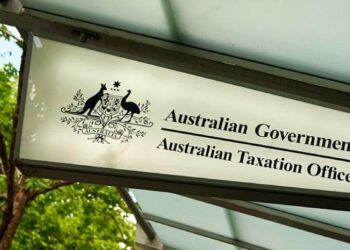Back in July 2021, the ATO released LCR 2021/2 clarifying how the amendments to section 295-550 of the Income Tax Assessment Act 1997 (ITAA 1997) operate in a scheme where the parties do not deal with each other at arm’s length and the trustee of a complying superannuation entity incurs non-arm’s length expenditure (NALE), or where expenditure is not incurred, in gaining or producing ordinary or statutory income.
The ATO in LCR 2021/2 made it clear that a general fund expense such as a $100 discount on accounting or adviser fee can taint all of the fund’s income, including all ordinary and statutory income, explained DBA Lawyers director Daniel Butler.
Paragraph 19 of the ruling states that in some instances, the NALE will have a sufficient nexus to all of the ordinary and/or statutory income derived by the fund. For example, a fund may incur expenditure that does not specifically relate to a particular amount being derived by the fund but still has a sufficient nexus more generally to all income derived by the fund.
Paragraph 20 outlines that where the fund incurs NALE of the nature outlined in paragraph 19 of the ruling, the nexus between the expenditure and all the income derived by the fund is sufficient for all the income to be NALI.
Mr Butler said it is possible for NALI to be invoked in a superannuation fund context by a fund obtaining a lower general expense or a lower specific expense that relates specifically to the contributions in question.
“However, a fund’s contributions are most likely going to be exposed to NALI due to a lower general fund expense,” he said.
He noted that concessional contributions are assessable as statutory income under section 295-160 and section 295-190 of the ITAA 1997.
“Thus, applying the ATO’s view as shown above in paragraphs 19 and 20 of LCR 2021/1 results in concessional contributions (CC) being taxed as NALI. The current tax rate for NALI is 45 per cent for FY2022,” he said.
However, in addition to the 45 per cent NALI rate, other taxes must be considered, said Mr Butler, such as the Division 293 tax under the ITAA 1997.
“People who earn more than $250,000 in a financial year pay an extra 15 per cent tax on their concessional contributions (below their CC cap) to the extent that their concessional contributions exceed the adjusted income threshold which is currently $250,000,” he said.
He also noted that concessional contributions made in excess of the CC cap are included in the member’s assessable income and taxed at their marginal tax rate. A maximum 15 per cent tax offset applies to the individual’s personal tax return.
He also explained that a 45 per cent tax rate applies to non-concessional contributions (NCCs) that exceed the member’s NCC cap.
“Broadly, a member can choose to avoid this 45 per cent tax on their excess NCCs if they release the excess amount,” he noted.
“If this choice is made in time, the member is taxed on the deemed associated earnings on the excess amount for a prescribed period that starts from the beginning of the relevant financial year.”
Analysis conducted by DBA Lawyers shows that the impact of the NALI provisions can be very severe, with a 75 per cent tax rate applying if a member has excess concessional contributions and a 120 per cent tax rate applying if a member has excess non-concessional contributions.
“A range of professional bodies have requested a carve out for concessional contributions from NALI to provide more fairness and to protect members’ compulsory minimum superannuation guarantee (SG) contributions from being subject to excessive tax rates,” said Mr Butler.
Mr Butler warned that the ramifications of NALI being applied to a large APRA fund could be ginormous.
“We submit that CCs should be excluded from NALI as CCs are a contribution of capital to a fund and are not in the nature of income; CCs are only deemed by statute to be income (i.e., statutory income). There is unlikely to be much causal connection between a lower expense and the contributions that a fund may receive,” he stated.
He also warned that SMSF advisers would need to be aware of the tax rates that can apply to contributions as many do not factor in the NALI risk when providing advice.
“Given the considerable uncertainty surrounding NALE and NALI following the finalisation of the ATO’s views in LCR 2021/2 and how easy it is for these rules to be invoked, advisers, especially tax advisers and those providing financial product advice, should start including appropriate warnings to clients of the substantial tax rates that may apply on contributions,” he said.
“Unless they do so, a client who incurs greater than 15 per cent tax on their CCs may seek recovery via legal recovery proceedings.”



ATO nonsense. A trustee cannot charge for his services to his fund. A trustee has no right to remuneration from a trust. He is meant to act gratuitously.